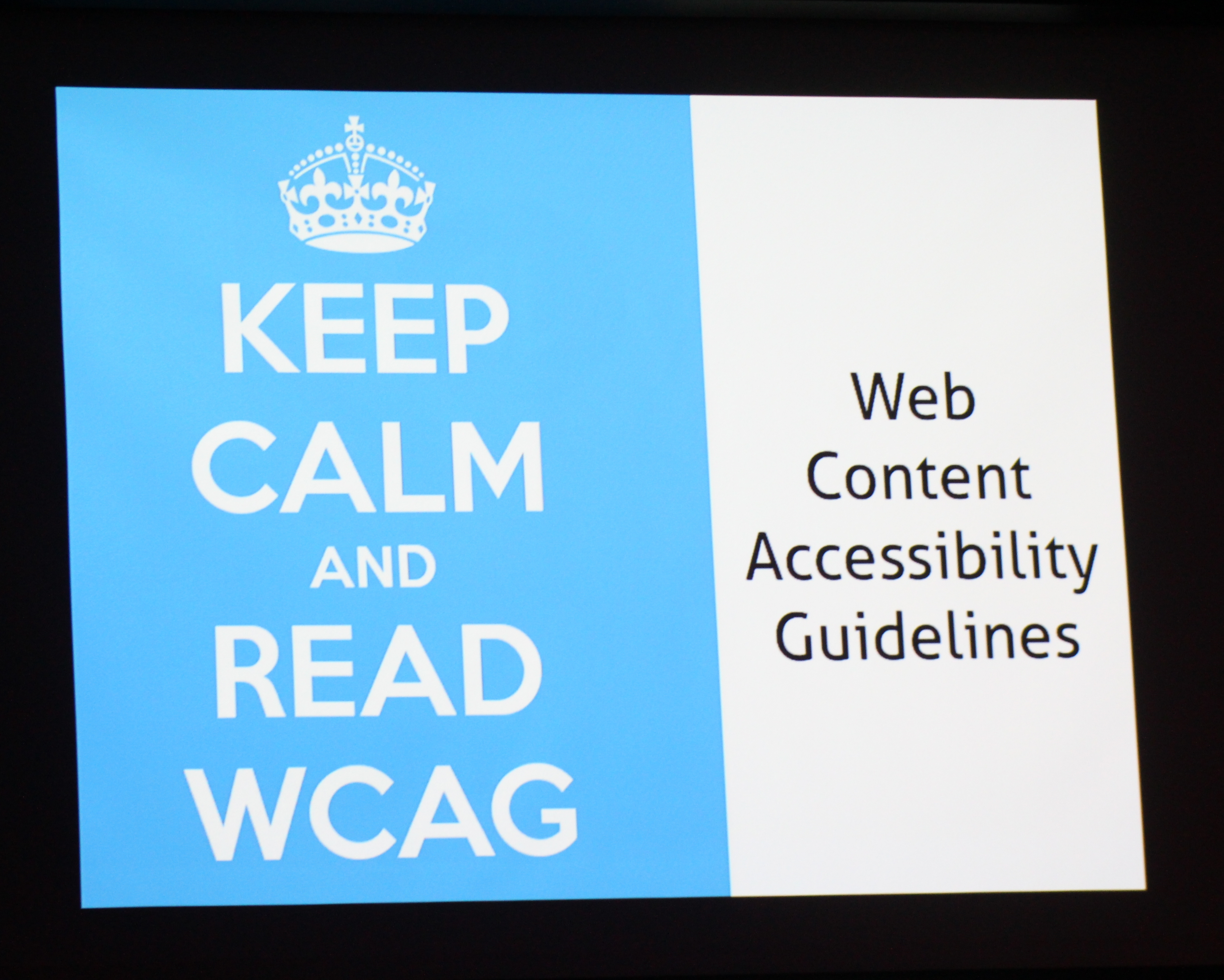Standards and Guidelines

Goals
Virginia Tech is committed to providing equal access to information, programs, and activities delivered through its official digital resources. Official digital resources include websites, web-based applications, digital content, and media used to conduct university business or academic activities delivered to people and organizations internal to and external to the university.
The Importance of Standards
Standards and guidelines explain the what, why, and how of making web content accessible. Web content comprised of text, images, sound, video, and other media includes markup languages or code to define structure, presentation, and alternatives for people with disabilities.
Laws and Policy
Among the laws, standards, and policies that inform what it means to provide "equal access" at Virginia Tech are the following:
Section 504 of the Rehabilitation Act of 1973: Prohibits programs and activities receiving Federal financial assistance from discriminating against individuals with disabilities
Section 508 of the Rehabilitation Act of 1973: Defines requirements for information technology accessibility (including, but not limited to, web accessibility) for Federal agencies and those receiving federal funds
The Commonwealth of Virginia's Information Technology Access Act: Requires public institutions of higher education to ensure IT equipment and software be usable without requiring sight
Title II of the Americans with Disabilities Act: Requires state and local governments to provide individuals with disabilities equal access to their programs, services, and activities
Web Content Accessibility Guidelines: The primary international standard for web accessibility
Web Content Accessibility Guidelines (WCAG) 2.0: The version of WCAG referenced in many laws.
Web Content Accessibility Guidelines (WCAG) 2.1: Released in June 2018. Virginia Tech Policy No. 7215 requires WCAG 2.1 AA as does Title II Part H of the Americans with Disabilities Act (ADA). Responsive mobile applications are a significant addition to this version.
Web Content Accessibility Guidelines (WCAG) 2.2: WCAG 2.2 was released in October 2023 by the W3C. This version is used in most lawsuits and negotiated settlements.
Virginia Tech Policy No. 7215, Rev.: 2: University policy, which states
Electronic and Information Technology (EIT) will comply specifically with Section 508 of the Rehabilitation Act as amended ('The Final Rule') and conformance with 'Web Content Accessibility Guidelines' (WCAG) 2.1 AA from the World Wide Web Consortium (W3C).
Functional Performance Criteria
Individuals with disabilities use a variety of abilities, techniques, and assistive technologies to access digital information. From a practical standpoint, digital resources must therefore be compliant with accessibility standards and guidelines in addition to being compatible with adaptive or assistive technologies. The following functional performance criteria can be used to judge whether accessibility is effectively achieved. All information and functionality presented in websites, web-based applications, or other digital resources must be available in a manner that is:
Completely perceivable, operable, and understandable with system font sizes and colors set by the user
Completely perceivable, operable, and understandable using a keyboard only
Completely perceivable, operable, and understandable using leading screen magnification software
Completely perceivable, operable, and understandable using leading screen or synthesized speech reading software
Completely perceivable, operable, and understandable using leading speech recognition software
Completely perceivable, operable, and understandable without sound
Completely perceivable, operable, and understandable without color
Robust by using technologies according to their specifications
Clearly and consistently navigable
Unlikely to trigger photosensitive seizures
Reference Standards and Guidelines
It is sometimes necessary to reference the source specifications for the various web content, digital documents, and accessibility standards, to know how to make digital resources accessible. Here is a list of some of the most relevant ones.
Web and Digital Document Standards
Accessibility Standards
Web Content Accessibility Guidelines (WCAG) 2.1: This was the primary international standard for web accessibility published by the Web Accessibility Initiative (WAI) of the World Wide Web Consortium (W3C). It covers a wide range of recommendations for making Web content more accessible. Following these guidelines will make content accessible to a wider range of people with disabilities, including blindness and low vision, deafness and hearing loss, learning disabilities, cognitive limitations, limited movement, speech disabilities, photosensitivity, and many combinations of these disabilities.
Authoring Tool Accessibility Guidelines (ATAG) 2.0: This provides guidelines for designing web content authoring tools that are both more accessible to authors with disabilities (Part A) and designed to enable, support, and promote the production of more accessible web content by all authors (Part B).
Core Accessibility API Mappings 1.1: This describes how user agents should expose the semantics of web content languages to accessibility APIs.
Portable Document Format/Universal Accessibility (PDF/UA): This defines the ISO standard for universal accessibility of PDF documents
Digital Publishing WAI-ARIA Module 1.0: This defines a set of WAI-ARIA roles specific to helping users of assistive technologies navigate through long-form documents. These roles are derived from the EPUB Structural Semantics Vocabulary.
EPUB Accessibility 1.0: This sets formal requirements to meet to certify EPUB content as accessible.
Personalization Semantics Content Module 1.0: This provides a vocabulary of terms that can be used to enhance web content with information about controls, symbols, and user interface elements.


